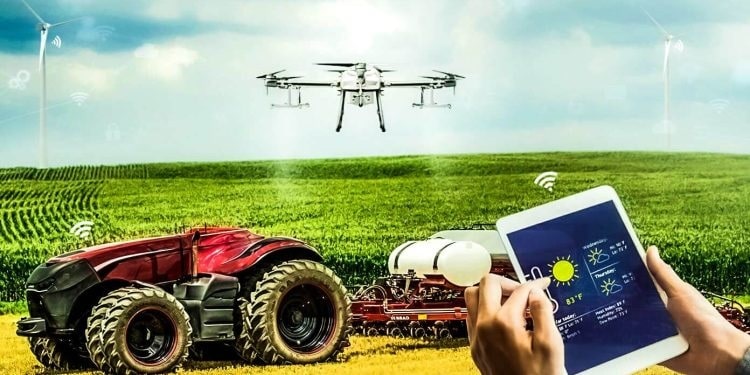As the global population continues to rise, the agriculture industry faces the challenge of producing more food efficiently and sustainably. Technology innovations are playing a crucial role in shaping the future of agriculture, offering solutions to enhance productivity, reduce environmental impact, and ensure food security.
In this article, we will explore the key technological advancements that are transforming the agricultural landscape and driving the industry towards a more sustainable and technologically-driven future.
Table of Contents
1. Precision Agriculture:
a. Satellite Imaging and GPS Technology:
Precision agriculture leverages satellite imaging and GPS technology to create detailed maps of farms. This enables farmers to optimize the use of resources by precisely managing irrigation, fertilization, and pest control, leading to increased efficiency and reduced environmental impact.
b. Drones and Unmanned Aerial Vehicles (UAVs):
Drones equipped with cameras and sensors provide real-time data on crop health, allowing farmers to identify potential issues such as diseases, nutrient deficiencies, or pest infestations. This proactive approach enables targeted interventions, minimizing the need for widespread pesticide use.
2. Smart Farming and IoT:
a. Connected Sensors:
The Internet of Things (IoT) integrates connected sensors into agriculture, allowing farmers to monitor soil conditions, weather patterns, and crop health in real-time. This data-driven approach enables informed decision-making and resource optimization.
b. Automated Farm Machinery:
Smart farming involves the use of autonomous machinery, such as robotic tractors and harvesters. These machines can perform tasks with precision, reducing labor requirements and increasing overall efficiency.
3. Vertical Farming and Controlled Environment Agriculture:
a. Indoor Farming Systems:
Vertical farming utilizes stacked layers of crops in controlled indoor environments. This approach optimizes space, reduces water usage, and allows for year-round cultivation, mitigating the impact of external climate conditions.
b. Hydroponics and Aeroponics:
Hydroponic and aeroponic systems, which involve growing plants without soil, are gaining popularity. These methods enhance nutrient absorption, conserve water, and enable the cultivation of crops in urban areas.
4. Biotechnology and Genetically Modified Organisms (GMOs):
a. Drought and Pest-Resistant Crops:
Biotechnology contributes to the development of genetically modified crops with enhanced resistance to drought, pests, and diseases. These innovations increase crop yields and reduce the reliance on chemical inputs.
b. Precision Gene Editing:
Advances in gene editing technologies like CRISPR-Cas9 allow for precise modifications to plant genomes. This can lead to the development of crops with improved nutritional content, longer shelf life, and other desirable traits.
5. Blockchain in the Food Supply Chain:
a. Transparent and Traceable Supply Chains:
Blockchain technology ensures transparency and traceability in the food supply chain. From farm to table, stakeholders can access real-time information about the origin, handling, and quality of agricultural products, promoting food safety and accountability.
b. Smart Contracts for Fair Trade:
Smart contracts on blockchain platforms can automate and enforce fair trade agreements between farmers and buyers. This ensures that farmers receive fair compensation for their produce while streamlining transactions.
6. Artificial Intelligence (AI) in Agriculture:
a. Predictive Analytics:
AI algorithms analyze vast amounts of data to provide farmers with predictive insights. This includes predicting crop yields, identifying optimal planting times, and forecasting potential disease outbreaks.
b. Automated Pest Detection:
AI-powered image recognition systems can identify and classify pests and diseases based on images of crops. Early detection allows for targeted treatment, reducing the need for broad-spectrum pesticides.
7. Renewable Energy Integration:
a. Solar-Powered Farms:
The integration of renewable energy sources, such as solar power, into farming operations reduces reliance on traditional energy grids. Solar panels on farms can generate electricity to power equipment and irrigation systems.
b. Bioenergy from Agricultural Waste:
Agricultural waste, such as crop residues and manure, can be used to produce bioenergy. Anaerobic digestion and biofuel production contribute to sustainable energy practices in agriculture.
Conclusion:
Tech innovations in agriculture are propelling the industry into a new era of efficiency, sustainability, and resilience. By leveraging precision agriculture, IoT, biotechnology, blockchain, and AI, farmers can make informed decisions, optimize resource use, and mitigate environmental impact.
As these technologies continue to evolve, the future of agriculture holds the promise of increased productivity, reduced waste, and a more sustainable approach to feeding a growing global population. Embracing these innovations is not just a choice for farmers but a necessity to meet the challenges of the 21st century and beyond.
